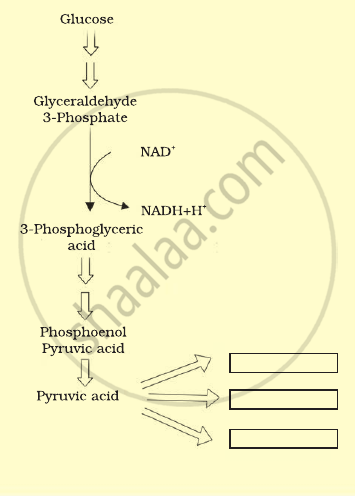Advertisements
Advertisements
Question
Energy is released during the oxidation of compounds in respiration. How is this energy stored and released as and when it is needed?
Solution
The energy which gets released during the oxidation of compounds in respiration is stored as Adenosine Triphosphate i.e., ATP. The ATP is stored in the form of chemical bonds.
ADP + IP + energy → ATP ......(ADP = Adenosine Diphosphate and IP = Inorganic phosphorous)
When energy is required then, this bond energy is broken and utilised
ATP → ADP + IP + energy.
APPEARS IN
RELATED QUESTIONS
Differentiate between Glycolysis and Krebs’ cycle.
The adenosine triphosphate (ATP) gain during glycolysis, connecting
link and Krebs' cycle respectively are ___
(a) 8, 6, 24
(b) 8, 24, 6
(c) 24, 8, 6
(d) 6, 8 24
Following reactions occur during glycolysis. Arrange them in the order of their occurrence in the glycolytic pathway.
- Dihydroxy acetone phosphate → Glyceraldehyde-3-phosphate
- Fructose-6-phosphate → Fructose-1, 6-bisphosphate
- Phosphoenolpyruvate → Pyruvic acid
- 2-Phosphoglycerat → Phosphoenolpyruvate
- Glucose-6-phosphate → Fructose-6- phosphate
- 1,3-bisphosphoglyceric acid → 3- phosphoglyceric acid
During glycolysis of aerobic respiration, how many times oxidation of substrate occurs?
During glycolysis, the first molecule to be dehydrogenated is ______.
Which one of the following is the first step of glycolysis?
F1 particles participate in the synthesis of ______.
Pyruvic acid is the end product of glycolysis. What are the three metabolic products of pyruvic acid produced under aerobic and anaerobic conditions? Write their name in the space provided in the diagram.

We commonly call ATP as the energy currency of the cell. Can you think of some other energy carriers present in a cell? Name any two.
Write any two energy yielding reactions of glycolysis.
